What’s the Best Used Subaru WRX? Our Top 3 Picks
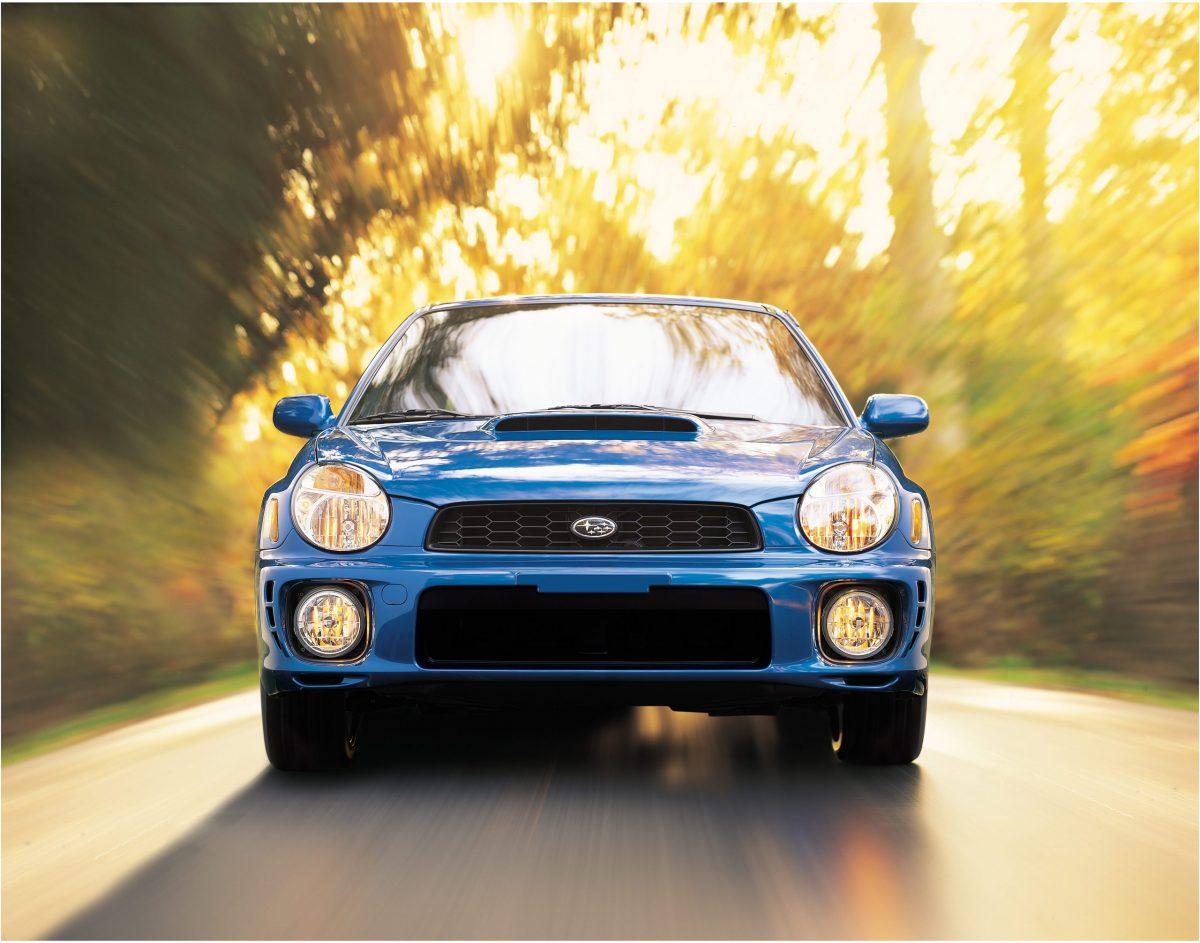
Contents
Introduction
Subaru has had many successful models over its 50+ years of selling cars in America, including two all-wheel-drive icons: the Outback and the WRX. Our Outback Buyer’s Guide covers the brand’s wagon/crossover/SUV flagship, which is consistently one of its bestselling models. But it’s the WRX that enthusiasts love.
WRX stands for “World Rally eXperimental,” and the turbocharged high-performance sedan wearing that badge finally found its way to the United States in 2002, after a decade of strong sales in Japan and other markets around the world. Demand was high. Based on the compact Impreza, the WRX had become a legend competing in the World Rally Championship (WRC), winning championships and many events with drivers Colin McRae, Richard Burns, Petter Solberg, and others. It was also a favorite in popular video games like Dirt, Forza, and Gran Turismo, which allowed American enthusiasts to drive the Subaru virtually, along with other sports cars not offered in the United States, including its main rival, the Mitsubishi Lancer Evolution, which also has a long list of WRC victories under its belt.
WRX sales were further fueled by Hollywood and a savvy move by Mitsubishi. The success of the 2001 movie The Fast and the Furious radically increased demand for Japanese performance cars and helped explode the sport compact market. So much so, that Mitsu began importing the Evo in 2003, kicking off a fierce rivalry between it and the WRX. The two turbocharged, all-wheel drive sedans battled it out in America’s showrooms, streets, and media for more than a decade.
Today, the Evo is history, but the WRX lives on. And used WRXs have become a hot commodity. They remain affordable, but values are climbing as enthusiasts have once again come to appreciate the performance and appeal of the older models. But which used WRX is best for you and your budget? Here we’ll cover three of the most desirable versions sold over the last 20 years and explain why each is a great value.

What’s an STI?
Before we get to our picks, it’s important that you can speak Subie, and that language begins and ends with STI. The letters stand for “Subaru Tecnica International.” Founded in 1988, it’s the division of the company responsible for motorsports, and it began modifying its street cars for more performance in the early 1990s. Today it employs about 120 people and operates out of a small headquarters outside Toyko.
Think of Subaru Technica International like BMW’s M Division or AMG at Mercedes. There have been STI versions of many Subaru models over the decades, including the Legacy, Forester, BRZ, and of course, the WRX. However, the 2004 WRX STI was the first to be sold in the United States, offering considerable performance over and above the standard WRX.
It’s also important to establish that every WRX has been all-wheel drive and powered by turbocharged and intercooled versions of Subaru’s horizontally-opposed four cylinder engines (aka “flat four” or “boxer”). All WRXs also feature functional hood scoops to feed their air-to-air intercoolers, which are mounted on top of their engines (as opposed to front mount intercoolers, positioned ahead of the radiator, which are more efficient and a common aftermarket upgrade).
The Best Years
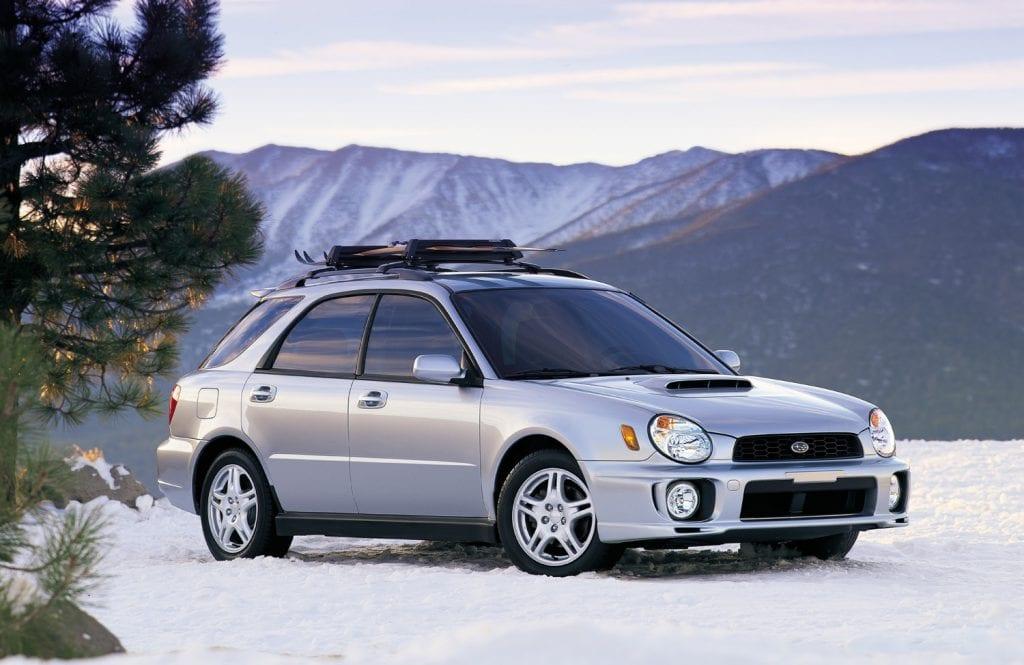
2002-2007 Subaru WRX
As noted above, the U.S. was late to the WRX party, so the first WRX models sold here were actually the second generation of the sporty compact. Examples from the first few years are easily identified by their round headlamps, which were controversial at the time. Often called Bug Eyes or Blob Eyes, these headlights continued through 2004, when Subaru replaced them with horizontal units. Subaru gave the WRX another facelift in 2006, installing what is known as the Hawkeye design with a distinct round center grille.
Initially, the WRX was powered by a turbocharged 2.0 liter flat four (EJ207) with 14.2 psi of boost, a 7000 rpm redline, 227 hp and 217 lb-ft. of torque. It cost under $25,000 and racked up awards quickly, including a spot on Car and Driver’s 10Best list. A 5-speed manual transmission with short, tightly-spaced gears and a 4-speed automatic were offered. With the manual, it accelerated to 60 mph in about 5.4 seconds and top out at 145 mph. To better battle the Mitsubishi Evo, Subaru replaced that engine in 2006 with a larger 2.5-liter mill (EJ255), which offered more bottom-end torque and 230 hp.
From 2002-2007, the WRX was also available as a small wagon (pictured above). And believe it or not, the wagon version was sold by Saab in 2005 and 2006 as the 9-2X. At the time, General Motors owned Saab and a good piece of Subaru. Other than the Saab grille and badging, the two vehicles are basically identical, and the 9-2X is often referred to fondly as the “Saaburu.”
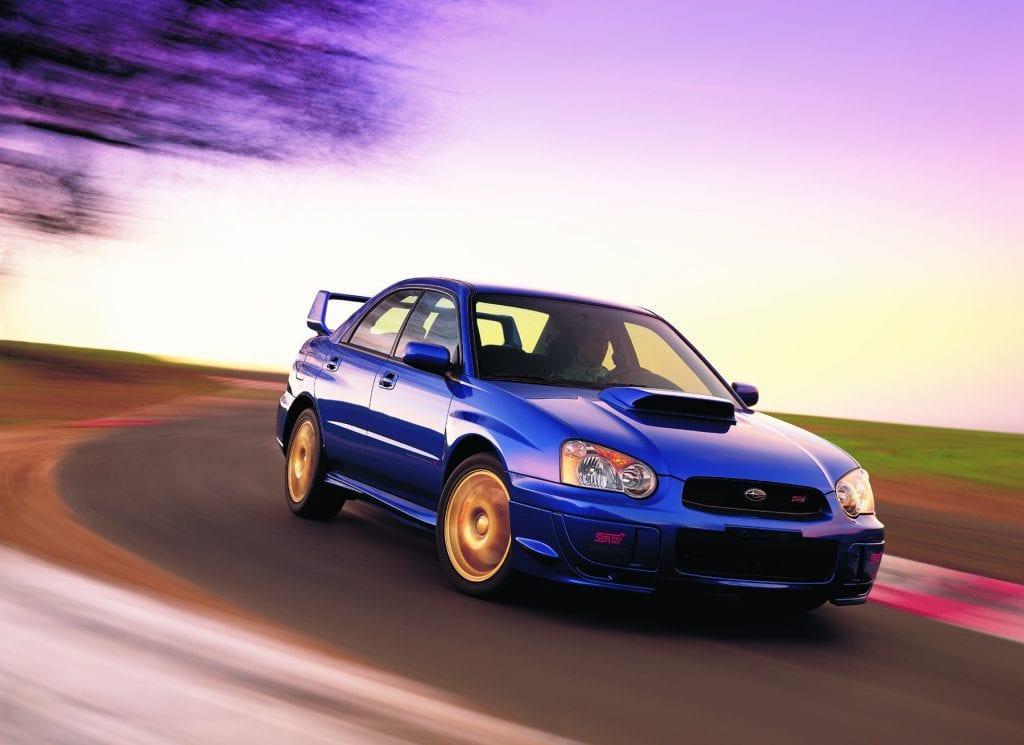
2004-2007 Subaru WRX STI
In 2004, Subaru’s street performance battle with the Mitsubishi Evo was red hot, so it introduced the WRX STI to America. The STI variant packed a turbo 2.5-liter flat four that swallowed 14.5 psi of boost and produced 300 hp and over 300 lb-ft of torque. A 6-speed manual was standard along with 17-inch BBS wheels, sticky Bridgestone Potenza RE070 tires, a retuned suspension, Recaro seats, a larger hoodscoop, and a towering rear spoiler, which has become the model’s visual signature.
The STI also had front and rear limited-slip differentials and a unique Driver Controlled Center Differential (DCCD) with a manual mode. In automatic mode, it sends 35 percent of the engine’s power to the front tires, but a thumbwheel on the console allows the driver to adjust that number with six variations up to a 50/50 torque split. At the time, these were the best performing Subaru ever sold in America. They hit 60 mph in less than 5 seconds.
At over $31,500 the first year, they were also expensive and sold in relatively small numbers. Many colors were offered, including two wheel colors, and some combinations are extremely rare, which can jack up a car’s desirability and price. Subaru sold just 25,813 STIs in the United States from 2004-2007. Here’s how the color combos broke down, from most to least common:
- WRB Pearl with Gold Wheels: 5,028
- Obsidian Black Pearl with Silver Wheels: 3,129
- Platinum Silver Metallic with Silver Wheels: 2,862
- WRB Pearl with Silver Wheels: 2,578
- Crystal Gray Metallic with Silver Wheels: 2,448
- Aspen White with Silver Wheels: 1,721
- Aspen White with Gold Wheels: 1,389
- Obsidian Black Pearl with Gold Wheels: 1,343
- Urban Gray Metallic with Silver Wheels: 1,269 (includes 400 STI Limiteds)
- Java Black Pearl with Silver Wheels: 935
- Steel Gray Metallic with Silver Wheels: 835
- Java Black Pearl with Gold Wheels: 679
- Satin White Pearl with STI Limited with Silver Wheels: 400
- Crystal Gray Metallic with Gold Wheels: 303
- Platinum Silver Metallic with Gold Wheels: 232
- Satin White Pearl with Gold Wheels: 169
- Steel Gray Metallic with Gold Wheels: 95
Subaru made a few tweaks over the four year STI production run that buyers should be aware of. In 2005, the door decals were changed slightly, with the words “Subaru Technica” now stacked above “International.” Previously, the STI logo and Subaru Technica International were on the same horizontal line. It’s small but important detail because a car wearing the wrong stickers may be telling you it’s had some body and paint work.
In 2005, Subaru also widened the wheels half an inch, changed the wheel hub bolt pattern from 5×100 to 5×114.3, and added small plastic body color flares to the rear wheel wells to improve aerodynamics. A year later, the all-wheel drive system was modified to send 41 percent of its power to the front tires, and Subaru’s designers added vane spoilers to the sedan’s roof. In 2007, its 6-speed manual gearbox got taller second, third, and fourth gear ratios.
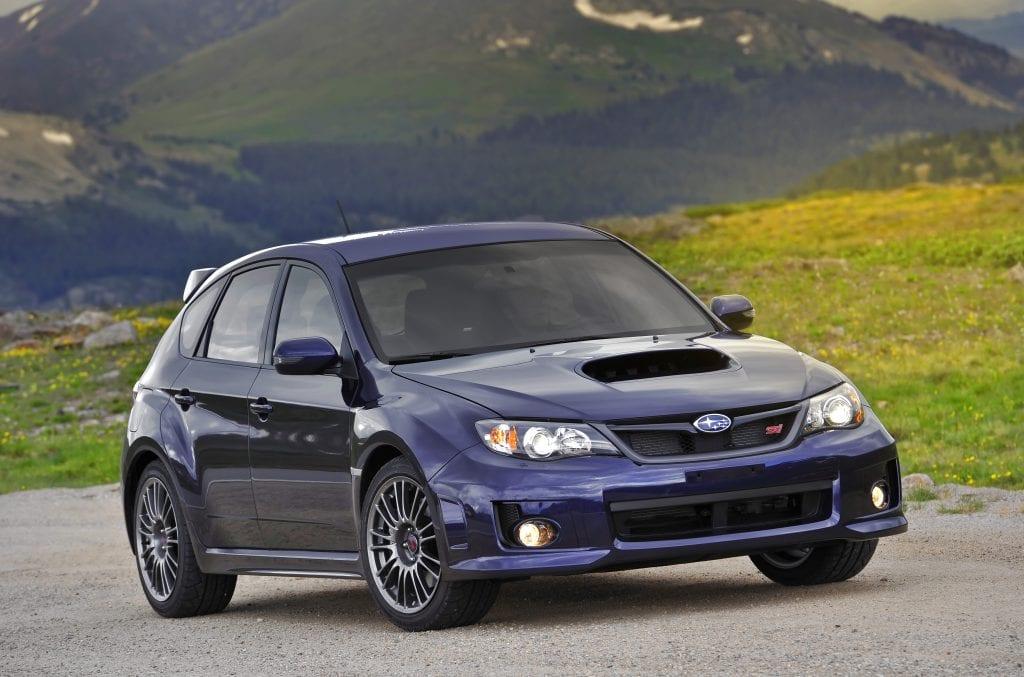
2008-2014 Subaru WRX STI Hatchback
In WRX history, versions based on the third generation of the Impreza, which were sold in the U.S. from 2008 until 2014, are considered the black sheep of the family. They certainly have their appeal, and they perform well enough, but they suffered visually. The exception to this rule, however, is the STI model, which was offered as a hatchback for the first and only time in its history.
Though the STI sedan did return in 2011 to be sold alongside the hatchback, we still prefer hot hatch version, which is not only more functional but also properly muscular with wide hips and flared wheel wells. They look tough, with a squat bull dog stance (the sedan is 6.5 inches longer) and four seriously large exhaust pipes. Mechanically little had changed. There were still 305 horses under its scooped hood; however, the engine’s redline was reduced from 7000 to 6700 rpm. The second gen WRX also packed on few more pounds thanks to some newly available luxuries as well as some chassis reinforcements, which were needed to keep the engine’s 290 lb-ft of torque from twisting the 5-door body like a pretzel.
To shave weight, Subaru fashioned the hood from aluminum, and to improve handling, the STI now featured much wider tracks than the standard WRX: 1.5 inches wider in front and 1.7 inches in back. Larger 18-inch BBS wheels were also now available. As as result of these changes, its reflexes had been quickened, and its ride quality improved. The base price was now over $35,000 and basically $40,000 with options.
Car and Driver tested one back in 2008, and it performed well, laying down .93 g of grip on the skidpad, hitting 60 mph in 5.1 seconds, and finishing the quarter mile in 13.6 seconds. “The old STI was quicker, but only by a few bee’s-wing beats,” says the review. “The power, the curb weight, and the gear ratios are virtually identical, although the new STI’s fatter tires allow less wheelspin during its violent launches, one likely reason it adds a couple of 10ths in the 60-mph sprint.”
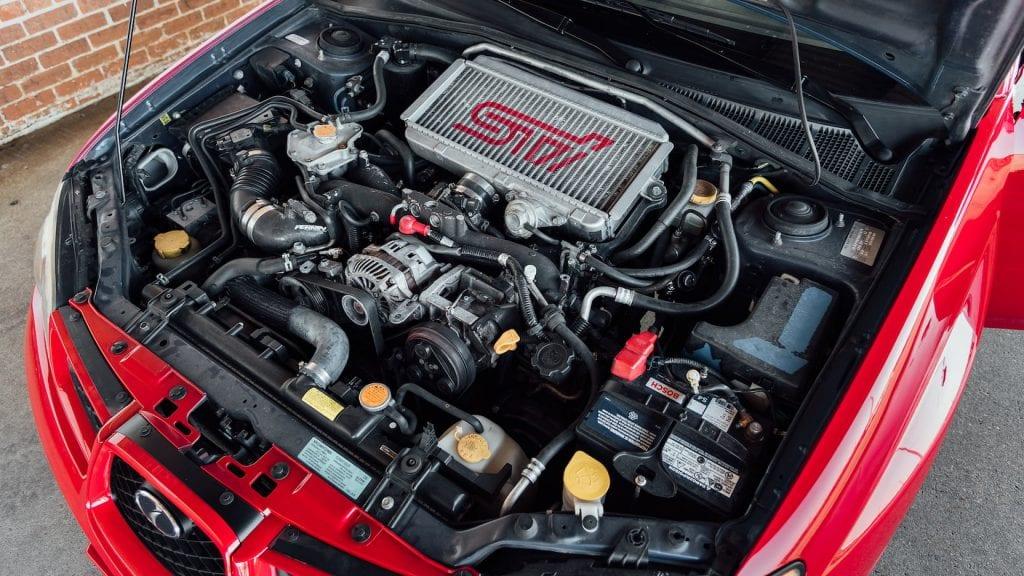
Problem Areas
Subaru’s flat fours are known to eat head gaskets, especially when they’re turbocharged. And driven hard. And have high miles. Don’t buy one without checking for coolant in the oil or oil in the coolant. It won’t take a qualified mechanic long to sniff out this problem if it exists.
The STI’s EJ25 engine should also have its timing belt and water pump serviced every 7 years or 105,000 miles. Ask the seller for a record of the maintenance. If it hasn’t been done within the last seven years, adjust the price of the car accordingly. Dealerships can charge over $2000 for the service. Instead, go to an independent shop that has a history with Subarus, where it should cost about $1500.
If you’re shopping an STI, also check its 6-speed for bad fifth and sixth gear synchros. If they grind, it may be a deal breaker. Replacement STI 6-speeds are big bucks. They can cost between $3,000 and $4,000. Keep in mind that replacement seats, brakes, and limited slip differentials are also expensive.
Check any used WRX for slop in its steering rack bushings, worn wheel bearings, and rust. Like every other Subaru with all-wheel drive, most WRXs and STIs were driven year round in all sorts of weather and conditions. Look for rot in their rear fender well arches and then crawl underneath and check the front seat brackets, the bumper beams, the bolts on the radiator supports, the rear differential housing, and trailing arms along with the rest of the undercarriage.
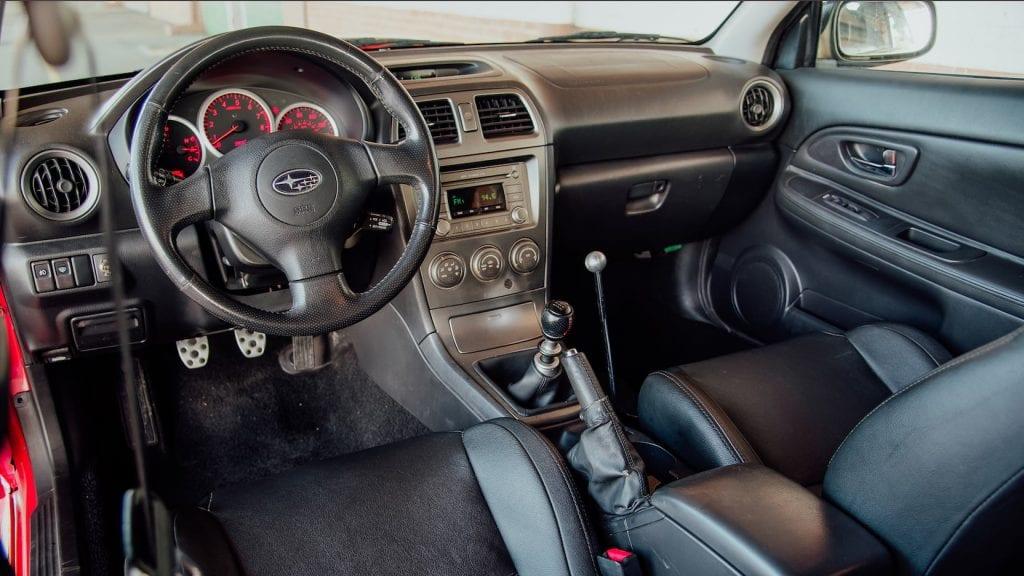
Buying Tips
Prices of Japanese performance cars from the 1990s and early 2000s have been skyrocketing lately. While there’s a market for modified cars, the ones that are bringing the most money are unmolested stock examples. So many WRXs and STIs have been modified or “tuned” over the years, with lowered suspensions, larger wheels and tires, cold air intakes, racing seats, etc., that it’s the “stockers” which are the most sought after and have the greatest investment potential.
Since Subaru changed very little throughout the course of each generation, the prices asked by sellers and dictated by the market usually fall back to mileage, condition, and colors. Cars in Subaru’s WRC racing colors of World Rally Blue (WRB) with gold wheels will always be popular and require a few extra dollars to acquire. When the cars were new, most WRXs and STIs tested by the magazines and online wore this combination.
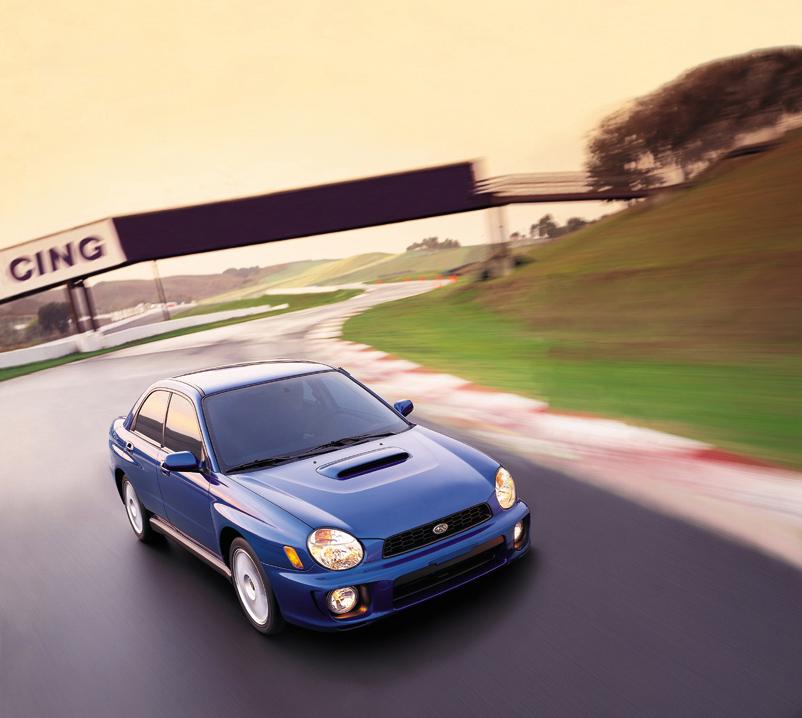
The Bottom Line
Back in the day, nobody thought about these cars becoming collectable, so the vast majority of them have high miles and have led hard lives. Well-kept first gen WRXs with over 100,000 miles typically range from $5,000 to $10,000, while particularly nice low-mileage examples can fetch as much as $20,000. The wagons cost a bit less, and the Saabs are basically free.
The prices of early STIs have been blowing up over the last five years. The best ones in the world are worth about $50,000, while a well-kept example with about 50,000 miles will set you back around $25,000. More if its painted WRB or one of the other particularly rare but desirable colors, like Satin White Pearl or Steel Grey Metallic. High mileage cars are about $15,000. Even salvage titles cost about $10,000.
Hatchback STIs are perhaps the best value. Remember, they’re mechanically identical, and they perform about the same as their predecessor, but they’re much more affordable. Most cost between $15,000 and $20,000, even examples with less than 100,000 miles, while super clean low-mileage cars are out there for less than $25,000.
And remember, when buying any collector or used car, it’s always important to do your homework and buy the best example you can afford.
Happy hunting.
Photos courtesy of Mecum, Subaru, and Wikimedia Commons